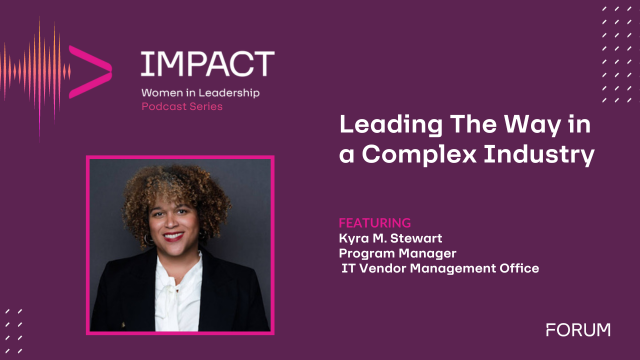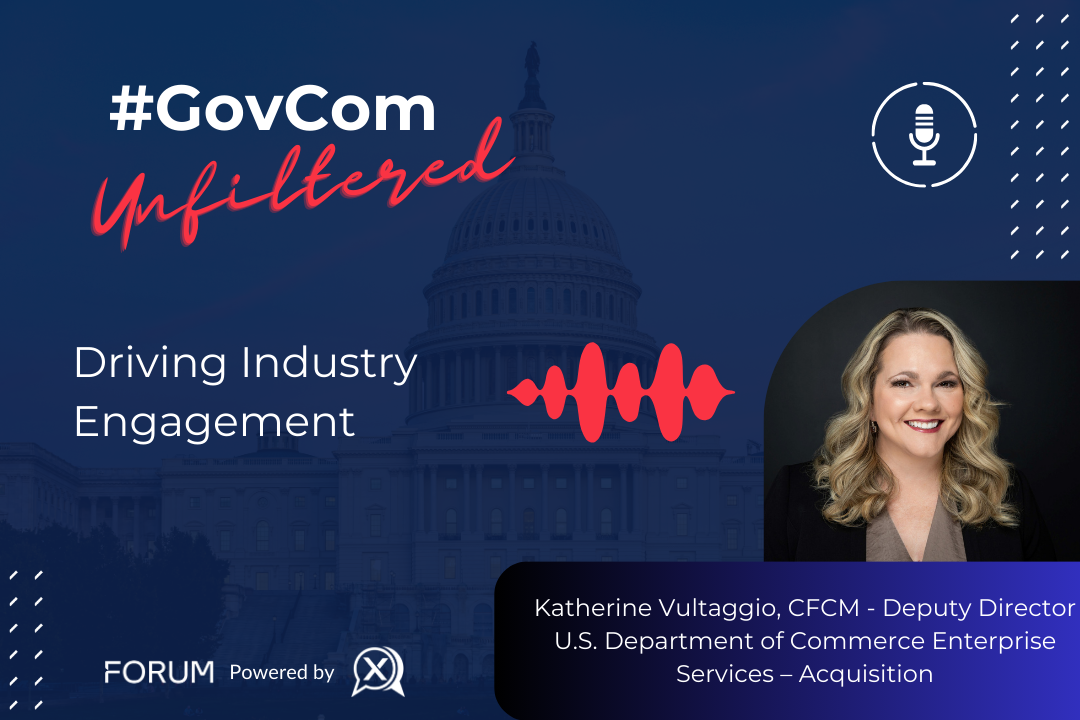With high IT modernization project failure rates, the risks of “getting it wrong” are significant. In this interview, Kyle Tuberson, Public Sector CTO for ICF, a global consultancy and leading provider of digital modernization services to the Federal Government, discusses how agencies can successfully modernize their systems to advance – and accelerate – mission outcomes.
Successful Modernization
While many agencies have positioned themselves to embrace digital transformation, many struggle with how to make their modernization goals a reality. Challenges include implementation barriers, regular leadership turnover, cultural resistance to change, and a struggle to balance long-term versus short-term wins, as well as a growing talent gap. At a high level, success is determined by the degree to which agencies are unified in their modernization efforts, their ability to adapt to shifting expectations, and their investments in retaining and developing talent, all while ensuring their data and systems remain secure.
Aligning CIO, CDO, and CTO Vision
Aligning the teams, including the CTO, who is responsible for developing an adaptive, creative and resilient operating model, and the CDO and mission leaders, who are more closely aligned to the domain, and business trying to extract value out of the systems is important to achieving successful IT modernization. Everyone must be aligned on the outcome or objective they’re trying to achieve and then must agree in principle on the direction.
Setting the Common Vision
Creating clear modernization goals and communicating said goal is imperative so everyone understands their role in the bigger initiative. The word “transformation” brings with it this scary big thing that needs to happen, and we know Government isn’t always nimble, leaning on operating models that have been in place for decades. It’s important to have clear communication, hitting messaging at every corner you can, so everyone understands how they fit into the bigger picture.
Meeting CX and UX Needs
Defining the customer is difficult; sometimes it is the citizen and sometimes it’s the workforce itself and it’s about the employee experience. Journey maps and focus groups with the end customer become critical—whether that is a citizen or an internal employee. Understanding their emotions and experiences as they are interacting with your services and your products should become your North Star. Engineers sometimes lose focus on the customer and there needs to be emphasis on ensuring services being built align with experiences citizens and employees have in their daily lives.
Retaining Agile Talent
As more advanced technology is infused into agencies’ “business operations,” creating a safe environment for talent to feel they can be innovative, experiment and explore becomes a critical component of transformation.
Recommendations for Government
Agencies need to ask themselves, what does it really mean to have a cross-functional team? Does the business buy in to being part of a team and how do you align the metrics for that team? And there’s moving away from project-based accounting to measuring and delivering on value with the product team. There are IT teams using DevOps and automation to make the technical teams very efficient, but they also must bring the business along on the journey to get the full value. The notion of product managers, defining the journey, and the roles and responsibilities along the way is going to be increasingly important.
Data as a Modernization Driver
Conducting voice of the customer programs, measuring how systems are operating, who’s using the systems, at what times they are using them, and collecting as much data as you can about the organization behind the scenes and then allowing that to inform the work is critical. There’s a time and place for gut instinct, but the data tells what is happening behind the scenes and can be used to better inform the direction of any effort. Strategic communication has to build the trust and get teams to buy into what the data is telling.
Cyber: A Modernization Pitfall
Outdated technology will be the source of downfall for agencies that fail to modernize. High-profile ransomware attacks aimed at private sector leaders continue to be on the rise, underlying the need for CIOs to modernize IT and keep sensitive data and systems secure. Technology can improve data security, but the dissolving network perimeter requires workforce cooperation to keep information secure. CIOs need to flex their leadership muscles to articulate the need for new technology adoption and provide employees with the autonomy to implement and provide feedback.
Prioritizing Low-Code/No-Code
Low-code platforms enable the business and mission to move quickly and to get something off the ground using internal people, people who may not have a background in computer science or in building. Platforms like ServiceNow, Salesforce, and Appian offer solutions that allow agencies to build applications faster without having to write a lot of the infrastructure or underlying code. It has taken the friction out of the experience and enabled CIOs to move through backlogs of work more quickly.
The real promise over time with the low-code is the inclusion of integration platforms-as-a-service that enable better connectivity and collaboration across agencies. For example, immigration touches many different Federal agencies. In order to deliver better immigration services to citizens, we need to connect what’s happening at the Internal Revenue Service with what’s happening at Social Security with what’s happening at the Department of Homeland Security and all of these platforms working together will enable that more quickly in the future.
The Multi-Platform Question
Agencies need to think about a multi-platform approach. Each of these platforms have strengths; they do some things better than others. Gartner predicts that by 2025, 85 percent of CIOs will be running 4 or 5 of these low-code platforms servicing different needs. Over time, multiple platforms working together and an ecosystem of partners is important. It’s going to take AWS, Google and Microsoft from a hyper-scaler cloud provider capability and all of these other niche platforms that service a particular need. Platform governance will be a critical function of the CIO because that’s where the capability and skills needed to govern these platforms properly live.
A Model of Mission-Led Federal Modernization
One example of a success story is with the Department of Health and Human Services Office of Childcare. Starting with customer journey maps we examined how the users of a system were working and their specific and particular needs. We brought in ServiceNow as a low-code platform, utilized CX and UX experience teams, and within nine months created a new experience for the workforce in the field. This effort accelerated value to the customer in a timespan that was much faster than they had experienced before.
This was a mission-led modernization effort. It wasn’t technology driven in as in “here’s Salesforce or here’s ServiceNow that can make your business better.” Our CX and UX teams sitting down with the customer drove this. Once they set the course, it was a matter of the technology teams partnering up and agreeing on how we were going to measure value. We didn’t want to take a project-based approach and manage to a schedule. Certainly, budget and all that is very important, but we needed to ensure we were delivering value along the way.
More about Federal digital transformation and the who—and how—of getting it done is available from ICF through this recent report.
About Kyle Tuberson
 Kyle Tuberson is ICF’s public sector chief technology officer. He has over 20 years of technology consulting experience in the areas of data visualization, geospatial analytics, data management, and data science. In his role, Kyle builds teams that use data to create innovative solutions to difficult business challenges. His teams have applied data science and data visualization techniques to help ICF’s clients reduce greenhouse gas emissions, prevent fraud with Government immigration and entitlement programs, and improve access to Healthcare in emerging markets. Currently, Kyle leads initiatives that focus on providing IT modernization services to the Government and to industries such as Healthcare and energy. Services include IT modernization, cloud computing, machine learning, internet of things (IoT), geospatial analytics, data visualization, and more. He was awarded the CIO University Certificate in Federal Executive Competencies by the Federal CIO Council. He is also a 2018 Federal 100 award winner.
Kyle Tuberson is ICF’s public sector chief technology officer. He has over 20 years of technology consulting experience in the areas of data visualization, geospatial analytics, data management, and data science. In his role, Kyle builds teams that use data to create innovative solutions to difficult business challenges. His teams have applied data science and data visualization techniques to help ICF’s clients reduce greenhouse gas emissions, prevent fraud with Government immigration and entitlement programs, and improve access to Healthcare in emerging markets. Currently, Kyle leads initiatives that focus on providing IT modernization services to the Government and to industries such as Healthcare and energy. Services include IT modernization, cloud computing, machine learning, internet of things (IoT), geospatial analytics, data visualization, and more. He was awarded the CIO University Certificate in Federal Executive Competencies by the Federal CIO Council. He is also a 2018 Federal 100 award winner.
About ICF
ICF’s public sector team works with mission, functional, and IT leaders within US Federal agencies to help them better serve their communities and constituents. In the digital transformation and IT modernization space, ICF helps agencies develop modern and innovative systems to deliver on their missions, including services like low-code/no-code, user experience (UI/UX), AI/ML, data management, DevSecOps, and workforce planning and analytics. They are the #1 low-code provider to federal agencies with SNOW, Appian, and SFDC.












